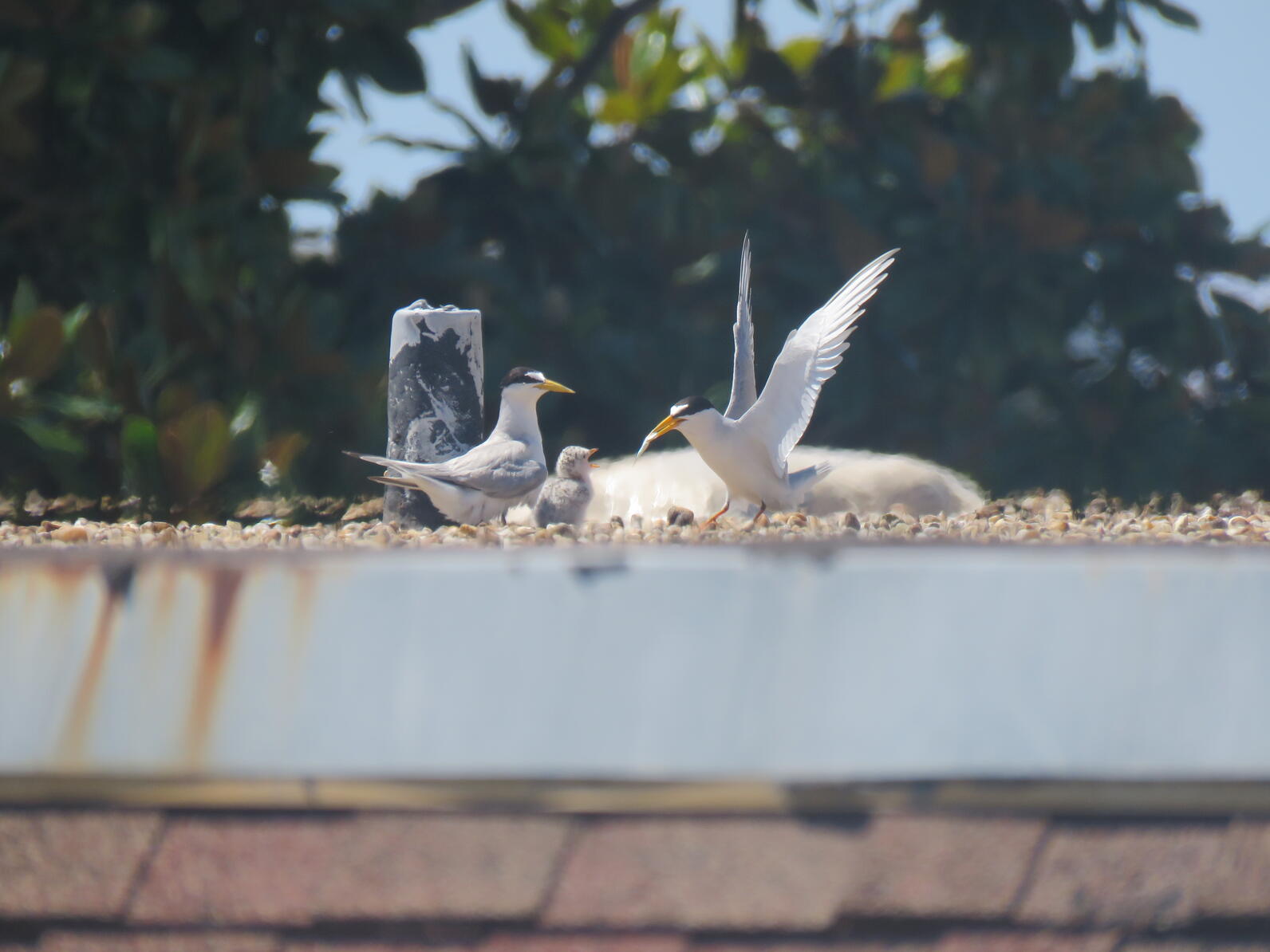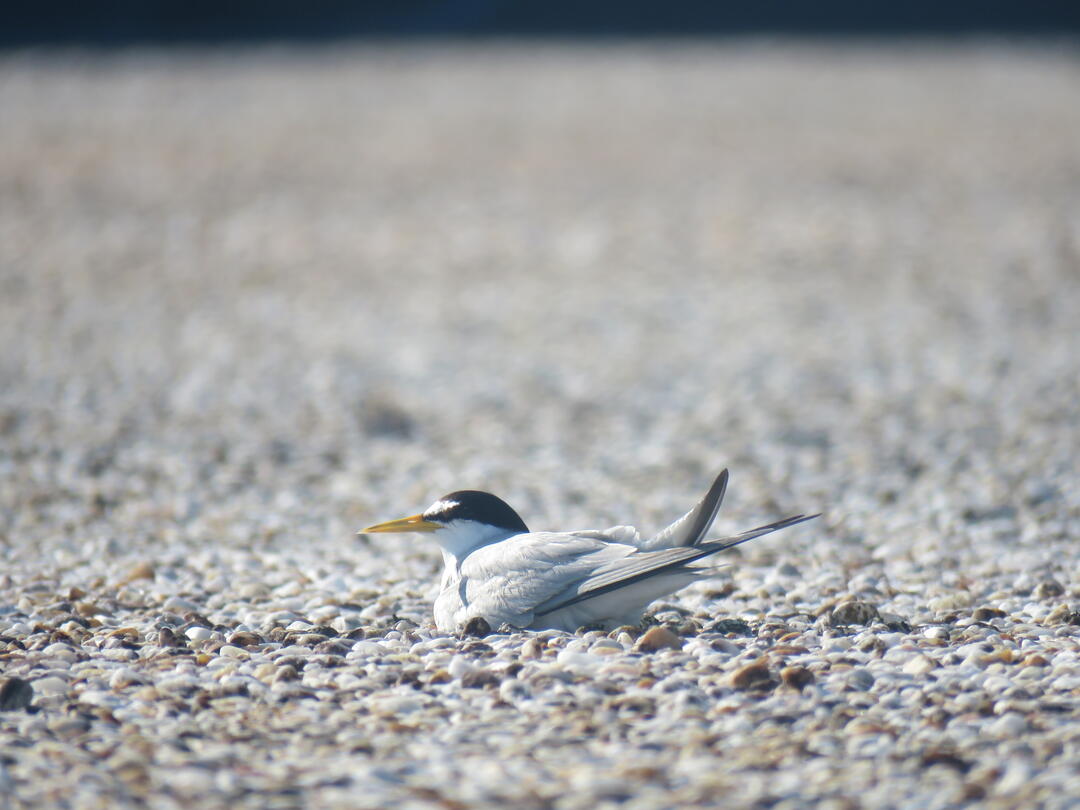As the end of summer draws near, several fall migrants begin to return to our coastlines to fuel up for their continued migration or to establish their winter residency here in Florida. In August, we bid our rooftop nesters farewell. 2020 has been a wonderfully busy year of rooftop monitoring here in the Panhandle, with a total of 15 rooftops active with nesting seabirds.
Least Terns are predominantly found nesting on gravel rooftops, but Black Skimmers and Gull-billed Terns also utilize rooftops throughout the breeding season in the Panhandle. Audubon works closely with landowners and management throughout the breeding season to reduce disturbances to the nesting birds. In addition to encouraging building owners to reduce rooftop visits and AC/HVAC repair during summer nesting season, we install chick protective fencing and educate store workers, security officers, and property owners about sensitive rooftop nesters.
However, not all of Audubon’s rooftop work ends once the breeding season is over. We are still actively working with landowners and property managers to secure rooftop nesting locations and increase protective measures for the next breeding season, as well as providing education and outreach to facilities that have been active in the past. This year, we are expanding our outreach to HVAC companies and technical colleges to directly educate the men and women who may come into contact with rooftop nesting colonies in the future throughout their professional careers.

With over 40 suitable nesting locations in the Panhandle, much of our work could not be done without the help of our dedicated volunteers, and we have an important opportunity for the community to get involved in rooftop conservation work.
Are you looking to get involved? You can:
-Conduct a Site Risk Evaluation of a rooftop in your area. This requires the volunteer to drive to the specified area and inventory possible risks in the vicinity of the site that may influence rooftop nesting negatively. For example, many aerial predators, such as hawks and crows, perch among tree lines and light posts in parking lots. The site evaluations would take note if those risks were present at the site. Exposed gutters, heavy traffic, and ground drainage systems are also potential risks to rooftop nesters that need to be evaluated.
Audubon and members of our local community work diligently throughout the year to help secure these nesting sites for the birds. Although the breeding season is over, we are already anticipating their return in 2021. Don’t forget about us! We will be back!
For more information on rooftop nesting and ways to get involved, contact Flconservation@audubon.org.






